Soviet Empire
Soviet Empire is a political term used in Sovietology (also called "Kremlinology")[1] to describe the actions and power of the Soviet Union before 1989, with an emphasis on its dominant role in other countries.
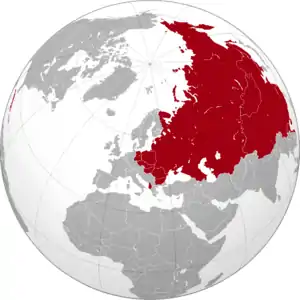
In the wider sense, the term refers to the country's foreign policy during the Cold War, which has been characterized as imperialist: the nations which were part of the Soviet Empire were nominally independent countries with separate governments that set their own policies, but those policies had to stay within certain limits decided by the Soviet Union. These limits were enforced by the threat of intervention by Soviet forces, and later the Warsaw Pact. Major military interventions took place in East Germany in 1953, Hungary in 1956, Czechoslovakia in 1968, Poland in 1980 and Afghanistan from 1979 to 1989. Countries in the Eastern Bloc were considered satellite states.
Characteristics
| Politics of the Soviet Union |
|---|
.svg.png.webp) |
|
|
Although the Soviet Union was not ruled by an emperor, and declared itself anti-imperialist and a people's democracy, it is argued that it exhibited tendencies common to historic empires.[2][3] The notion of "Soviet empire" often refers to a form of "classic" or "colonial" empire with communism only replacing conventional imperial ideologies such as Christianity or monarchy, rather than creating a revolutionary state. Academically the idea is seen as emerging with Richard Pipes' 1957 book The Formation of the Soviet Union: Communism and Nationalism, 1917-1923, but it has been reinforced, along with several other views, in continuing scholarship.[4]: 41 Several scholars hold that the Soviet Union was a hybrid entity containing elements common to both multinational empires and nation states.[2] It has also been argued that the Soviet Union practiced colonialism similar to conventional imperial powers.[3][5][6][7][8][9][10]
The Soviets pursued internal colonialism in Central Asia. For example, the state's prioritized grain production over livestock in Kyrgyzstan, which favored Slavic settlers over the Kyrgyz natives, thus perpetuating the inequalities of the tsarist colonial era.[8] Maoists argued that the Soviet Union had itself become an imperialist power while maintaining a socialist façade, or social imperialism.[11][12] Another dimension of Soviet imperialism is cultural imperialism, the Sovietization of culture and education at the expense of local traditions.[13] Leonid Brezhnev continued a policy of cultural Russification as part of Developed Socialism, which sought to assert more central control.[14] Seweryn Bialer argued that the Soviet state had an imperial nationalism.[15]
From the 1930s through the 1950s, Joseph Stalin ordered population transfers in the Soviet Union, deporting people (often entire nationalities) to underpopulated remote areas. The policy officially ended in the Khrushchev era, with many of the nationalities allowed to return in 1957. However, Nikita Khrushchev and Leonid Brezhnev refused the right of return for Crimean Tatars, Russian Germans and Meskhetian Turks.[16] In 1991, the Supreme Soviet of Russia declared the Stalinist mass deportations to be a "policy of defamation and genocide".[17]
The historical relationship between Russia (the dominant republic in the Soviet Union) and these Eastern European countries helps explain their longing to eradicate the remnants of Soviet culture. Poland and the Baltic states epitomize the Soviet attempt to build uniform cultures and political systems. According to Dag Noren, Russia was seeking to constitute and reinforce a buffer zone between itself and Western Europe so as to protect itself from potential future attacks from hostile Western European countries.[15] The Soviet Union had lost 26 to 27 million lives over the course the Second World War.[18] To prevent a recurrence of such costly warfare, Soviet leaders believed that they needed to establish a hierarchy of political and economic dependence between neighboring states and the USSR.[15]
During the Brezhnev era, the policy of "Developed Socialism" declared the Soviet Union to be the most complete socialist country—other countries were "socialist", but the USSR was "developed socialist"—explaining its dominant role and hegemony over the other socialist countries.[19] This and the interventionist Brezhnev doctrine, permitting the invasion of other socialist countries, led to characterisation of the USSR as an empire.[14]
Soviet influence in the "socialist-leaning countries" was mainly political and ideological rather than economically exploitative: the Soviet Union pumped enormous amounts of "international assistance" into them in order to secure influence,[20] ultimately to the detriment of its own economy. The Soviet Union sought a group of countries which would rally to its cause in the event of an attack from Western countries, and support it in the context of the Cold War.[21] After the dissolution of the Soviet Union, the Russian Federation declared itself the successor state, and recognized $103 billion of Soviet foreign debt while also claiming $140 billion of Soviet assets abroad.[20]
Economic expansion did, however, play a significant role in Soviet motivation to spread influence in its satellite territories. These new territories would ensure an increase in the global wealth which the Soviet Union would have a grasp on.[21]
Soviet officials from the Russian Soviet Federative Socialist Republic intertwined this economic opportunity with a potential for migration. In fact, they saw in these Eastern European countries the potential of a great workforce. They offered a welcome to them upon the only condition that they work hard and achieve social success. This ideology was shaped on the model of the meritocratic, 19th-century American foreign policy.[21]
Formal and informal empire
Scholars discussing Soviet empire have discussed it as a formal empire or informal empire. In a more formal interpretation of "Soviet empire", this meant absolutism, resembling Lenin's description of the tsarist empire as a "prison of the peoples" except that this "prison of the peoples" had been actualized during Stalin's regime after Lenin's death.[4]: 41–42
Another view, especially of the non-Stalinist eras, sees the Soviet empire as constituting an "informal empire" over nominally sovereign states in the Warsaw Pact due to Soviet pressure and military presence.[22] The Soviet informal empire depended on subsidies from Moscow.[23] The informal empire in the wider Warsaw Pact also included linkages between Communist Parties.[24] Some historians consider a more multinational-oriented Soviet Union emphasizing its socialist initiatives, such as Ian Bremmer, who describes a "matryoshka-nationalism" where a pan-Soviet nationalism included other nationalisms.[4]: 48 Eric Hobsbawn argued that the Soviet Union had effectively designed nations by drawing borders.[4]: 45 Dmitri Trenin wrote that by 1980, the Soviet Union had formed both a formal and informal empire.[25]
The informal empire would have included Soviet economic investments, military occupation, and covert action in Soviet-aligned countries. The studies of informal empire have included Soviet influence on East Germany[24] and 1930s Xinjiang.[26][27] From the 1919 Karakhan Manifesto to 1927, diplomats of the Soviet Union would promise to revoke concessions in China, but the Soviets secretly kept tsarist concessions such as the Chinese Eastern Railway, as well as consulates, barracks, and churches.[28][29] After the Sino-Soviet conflict (1929), the Soviet Union regained the Russian Empire's concession of the Chinese Eastern Railway and was held until its return in 1952.[30]
Alexander Wendt suggested that by the time of Stalin's Socialism in One Country alignment, socialist internationalism "evolved into an ideology of control rather than revolution under the rubric of socialist internationalism" internally within the Soviet Union. By the start of the Cold War it evolved into a "coded power language" that was once again international, but applied to the Soviet informal empire. At times the USSR signaled toleration of policies of satellite states indirectly, by declaring them consistent or inconsistent with socialist ideology, essentially recreating a hegemonic role. Wendt argued that a "hegemonic ideology" could continue to motivate actions after the original incentives were removed, and argued this explains the "zeal of East German Politburo members who chose not to defend themselves against trumped-up charges during the 1950s purges."[24]: 704
Analyzing the dissolution of the Soviet Union, Koslowski and Kratochwil argued that a postwar Soviet "formal empire" represented by the Warsaw Pact, with Soviet military role and control over of member states' foreign relations, had evolved into an informal suzerainty or "Ottomanization" from the late 1970s to 1989. With Gorbachev's relinquishing of the Brezhnev Doctrine in 1989, the informal empire reduced in pressure to a more conventional sphere of influence, resembling Finlandization but applied to the erstwhile East Bloc states, until the Soviet fall in 1991. By contrast "Austrianization" would have been a realist model of great power politics by which the Soviets would have hypothetically relied on Western guarantees to keep an artificial Soviet sphere of influence. The speed of reform in the 1989 to 1991 period made both a repeat of Finlandization and Austrianization impossible for the Soviet Union.[31][32]
Allies of the Soviet Union

Warsaw Pact
These countries were the closest allies of the Soviet Union and were also members of the Comecon, a Soviet-led economic community founded in 1949. The members of the Warsaw Pact, sometimes called the Eastern Bloc, were widely viewed as Soviet satellite states. These countries were occupied (or formerly occupied) by the Red Army, and their politics, military, foreign and domestic policies were dominated by the Soviet Union. The Warsaw Pact included the following states:[33][34]
.svg.png.webp) People's Socialist Republic of Albania (1946–1968)[lower-alpha 2]
People's Socialist Republic of Albania (1946–1968)[lower-alpha 2].svg.png.webp) People's Republic of Bulgaria (1946–1990)
People's Republic of Bulgaria (1946–1990)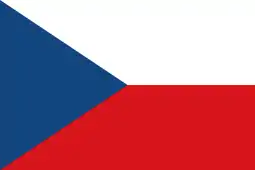 Czechoslovak Socialist Republic (1948–1990)
Czechoslovak Socialist Republic (1948–1990) German Democratic Republic (1949–1990)
German Democratic Republic (1949–1990) Hungarian People's Republic (1949–1989)
Hungarian People's Republic (1949–1989) Polish People's Republic (1947–1989)
Polish People's Republic (1947–1989).svg.png.webp) Socialist Republic of Romania (1947–1989)[lower-alpha 3]
Socialist Republic of Romania (1947–1989)[lower-alpha 3]
In addition to the Soviet Union in the United Nations Security Council, the Soviet Union had two of its union republics in the United Nations General Assembly:
Other Marxist–Leninist states allies with the Soviet Union
These countries were Marxist-Leninist states who were allied with the Soviet Union, but were not part of the Warsaw Pact.
.svg.png.webp) Democratic Republic of Afghanistan (1978–1991)
Democratic Republic of Afghanistan (1978–1991) People's Republic of Angola (1975–1991)[lower-alpha 4]
People's Republic of Angola (1975–1991)[lower-alpha 4].svg.png.webp) People's Republic of Benin (1975–1990)
People's Republic of Benin (1975–1990) Chinese Soviet Republic (1931–1937)
Chinese Soviet Republic (1931–1937) People's Republic of China (1949–1961)[lower-alpha 5]
People's Republic of China (1949–1961)[lower-alpha 5] People's Republic of the Congo (1969–1991)
People's Republic of the Congo (1969–1991)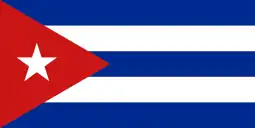 Republic of Cuba (1959–1991)
Republic of Cuba (1959–1991).svg.png.webp) Provisional Military Government of Socialist Ethiopia, then People's Democratic Republic of Ethiopia (1974–1991)
Provisional Military Government of Socialist Ethiopia, then People's Democratic Republic of Ethiopia (1974–1991) People's Republic of Kampuchea (1979–1989)
People's Republic of Kampuchea (1979–1989) People's Revolutionary Government of Grenada (1979–1983)
People's Revolutionary Government of Grenada (1979–1983) Democratic People's Republic of Korea (1948–1991, also allied with China)[35][lower-alpha 6]
Democratic People's Republic of Korea (1948–1991, also allied with China)[35][lower-alpha 6] Lao People's Democratic Republic (1975–1991)
Lao People's Democratic Republic (1975–1991).svg.png.webp) Mongolian People's Republic (1924–1991)
Mongolian People's Republic (1924–1991).svg.png.webp) People's Republic of Mozambique (1975–1990)
People's Republic of Mozambique (1975–1990) Somali Democratic Republic (1969–1977)[lower-alpha 7]
Somali Democratic Republic (1969–1977)[lower-alpha 7].svg.png.webp) Tuvan People's Republic (1921–1944)[lower-alpha 8]
Tuvan People's Republic (1921–1944)[lower-alpha 8]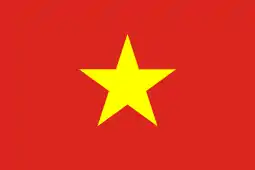 Democratic Republic of Vietnam (1945–1976), then Socialist Republic of Vietnam (1976–1991)[lower-alpha 9]
Democratic Republic of Vietnam (1945–1976), then Socialist Republic of Vietnam (1976–1991)[lower-alpha 9] Second East Turkestan Republic (1944–1949)[lower-alpha 10]
Second East Turkestan Republic (1944–1949)[lower-alpha 10].svg.png.webp) Federal People's Republic of Yugoslavia (1945–1948)[lower-alpha 11]
Federal People's Republic of Yugoslavia (1945–1948)[lower-alpha 11] People's Democratic Republic of Yemen (South Yemen) (1967–1990)
People's Democratic Republic of Yemen (South Yemen) (1967–1990)
Non-Marxist–Leninist countries allied with the Soviet Union

Some countries in the Third World had pro-Soviet governments during the Cold War. In the political terminology of the Soviet Union, these were "countries moving along the socialist road of development" as opposed to the more advanced "countries of developed socialism" which were mostly located in Eastern Europe, but that also included Cuba and Vietnam. They received some aid, either military or economic, from the Soviet Union and were influenced by it to varying degrees. Sometimes, their support for the Soviet Union eventually stopped for various reasons and in some cases the pro-Soviet government lost power while in other cases the same government remained in power, but ultimately ended its alliance with the Soviet Union.[38]
 Algeria (1962–1991)
Algeria (1962–1991) People's Republic of Bangladesh (1971–1975)
People's Republic of Bangladesh (1971–1975) Burkina Faso (1983–1987)
Burkina Faso (1983–1987).svg.png.webp) Burma (1962–1988)
Burma (1962–1988) .svg.png.webp) Cape Verde (1975–1990)
Cape Verde (1975–1990) Chile (1970–1973)[lower-alpha 12][39]
Chile (1970–1973)[lower-alpha 12][39].svg.png.webp) Egypt (1954–1973)
Egypt (1954–1973).svg.png.webp) Ghana (1964–1966)
Ghana (1964–1966) Guinea (1960–1978)
Guinea (1960–1978)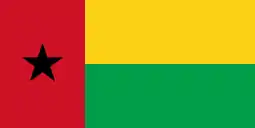 Guinea Bissau (1973–1991)
Guinea Bissau (1973–1991) Equatorial Guinea (1968–1979)
Equatorial Guinea (1968–1979) India (1971–1989)
India (1971–1989)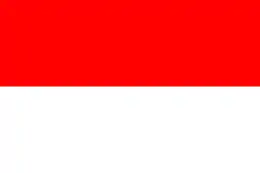 Indonesia (1959–1965)
Indonesia (1959–1965).svg.png.webp) Iraq (1958–1963; 1968–1991)
Iraq (1958–1963; 1968–1991)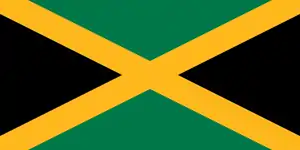 Jamaica (1972–1980)
Jamaica (1972–1980) .svg.png.webp) Libya (1969–1991)
Libya (1969–1991) Democratic Republic of Madagascar (1972–1991)
Democratic Republic of Madagascar (1972–1991) Mali (1960–1991)
Mali (1960–1991) Nicaragua (1979–1990)
Nicaragua (1979–1990)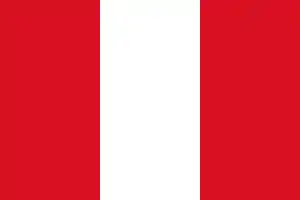 Peru (1968–1975)
Peru (1968–1975) Sao Tome and Principe (1975–1991)
Sao Tome and Principe (1975–1991).svg.png.webp) Seychelles (1977–1991)
Seychelles (1977–1991) Sudan (1968–1972)
Sudan (1968–1972) Syria (1955–1991)
Syria (1955–1991) Tanzania (1964–1985)
Tanzania (1964–1985)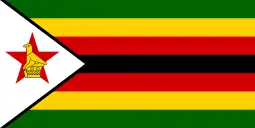 Zimbabwe (1980–1991)
Zimbabwe (1980–1991)
Marxist–Leninist states opposed to the Soviet Union

Some communist states were opposed to the Soviet Union and criticized many of its policies. Although they may have had many similarities to the USSR on domestic issues, they were not Soviet allies in international politics. Relations between them and the Soviet Union were often tense, sometimes even to the point of armed conflict.
.svg.png.webp) Albania (1955–1991)
Albania (1955–1991) Cambodia (1975–1979)[lower-alpha 13]
Cambodia (1975–1979)[lower-alpha 13] China (1956–1991)
China (1956–1991).svg.png.webp) Romania (1965–1989)
Romania (1965–1989) Somalia (1977–1991)
Somalia (1977–1991).svg.png.webp) Yugoslavia (1948–1991)
Yugoslavia (1948–1991)
Neutral states
The position of Finland was complex. The Soviet Union invaded Finland in the Winter War, which ended with the 1940 Moscow Peace Treaty. In the Continuation War, Finland (together with Nazi Germany) subsequently renewed hostilities in 1941. The war ended in Soviet victory, but Finland retained most of its territory and its market economy, trading on the Western markets and ultimately joining the Western currency system.
Nevertheless, although Finland was considered neutral, the Finno-Soviet Treaty of 1948 significantly limited Finnish freedom of operation in foreign policy. It required Finland to defend the Soviet Union from attacks through its territory, which in practice prevented Finland from joining NATO, and effectively gave the Soviet Union a veto in Finnish foreign policy. Thus, the Soviet Union could exercise "imperial" hegemonic power even towards a neutral state.[40] Under the Paasikivi–Kekkonen doctrine, Finland sought to maintain friendly relations with the Soviet Union, and extensive bilateral trade developed. In the West, this led to fears of the spread of "Finlandization", where Western allies would no longer reliably support the United States and NATO.[41]
Post-Soviet era reactions
Ukraine
The process of decommunization and de-Sovietization in Ukraine started soon after dissolution of the Soviet Union in the early 1990s, led by President Leonid Kravchuk, a former high-ranking party official.[42] After an early election in 1994 made the former "red director" Leonid Kuchma the President of Ukraine, the process came to near-complete halt.
In April 2015, a formal decommunization process started in Ukraine after laws were approved which outlawed communist symbols, among other things.[43] On 15 May 2015, President Petro Poroshenko signed a set of laws that started a six-month period for the removal of communist monuments (excluding World War II monuments) and renaming of public places named after communist-related themes.[44][45] At the time, this meant that 22 cities and 44 villages would need to be renamed.[46][47] In 2016, 51,493 streets and 987 cities and villages were renamed, and 1,320 Lenin monuments and 1,069 monuments to other communist figures were removed.[48]
Poland
Since 1989, Poland has taken down hundreds of Soviet monuments due to the negative reputation the Soviet Union has in Poland.[49] Although some Poles see the memorials as justified in honouring those who died fighting against Nazi Germany, others seek the removal of Soviet memorials because of the decades of totalitarianism that resulted from Soviet occupation, and also because of the 1939 Nazi-Soviet pact and the Katyn massacre.[50] Historian Lukasz Kaminski of the Institute of National Remembrance said, "Memorials in city centers and villages can send the wrong historical signal... What do you think we got, when the Soviets liberated Poland from Hitler, if not a new yoke?"[49]
In the 2010s, Poland continued to demolish remaining Soviet monuments, some of which have been relocated to museums.[51] The removals have attracted criticism from Russian Foreign Minister Sergey Lavrov, who has lashed out at Warsaw officials for opposing the monuments,[51] as has Maria Zakharova, a spokesperson for the Russian foreign ministry.[50] Poland is seeking to eliminate all material reminders of Soviet dominance; even prior to the Soviet era, there was a difficult history with the Russian Empire, which invaded Poland on multiple occasions.[15]
Czech Republic
In April 2020, a statue of Soviet Marshal Ivan Konev was removed from Prague, which prompted criminal investigation by Russian authorities who considered it an insult. The Mayor of Prague's sixth municipal district, Ondřej Kolář, announced on Prima televize that he would be under police protection after a Russian man made attempts on his life. Prime Minister Andrej Babiš condemned that as foreign interference, while Kremlin Press Secretary Dmitry Peskov dismissed allegations of Russian involvement as "another hoax".[52]
See also
- American imperialism
- Anti-Russian sentiment
- Brezhnev Doctrine
- Captive Nations
- Cominform
- Communist state
- Containment
- Eastern Bloc
- Evil Empire speech
- Foreign relations of the Soviet Union
- Informal empire
- Imperialism
- Index of Soviet Union-related articles
- Military occupations by the Soviet Union
- Russian imperialism
- Russian-occupied territories
- Sino-Soviet split
- Social imperialism
- Soviet Union–United States relations
- Western betrayal
Notes
- 34,374,483 km2.
- Following the Soviet–Albanian split (1955–1968) and the Sino–Albanian split (1972–1978).
- After Nicolae Ceaușescu's refusal to participate in the Warsaw Pact invasion of Czechoslovakia in 1968 (see de-satellization of Communist Romania).
- With the Soviet intervention in the Angolan Civil War.
- Following the Sino-Soviet split (1956–1961).
- After Chinese intervention in the Korean War in 1950, North Korea remained a Soviet ally,[36] but rather used the Juche ideology to balance Chinese and Soviet influence, pursuing a highly isolationist foreign policy and not joining the Comecon or any other international organization of communist states following the withdrawal of Chinese troops in 1958.
- At the outbreak of the Somali invasion of Ethiopia in 1977, the Soviet Union ceased to support Somalia, with the corresponding change in rhetoric. In turn, Somalia broke diplomatic relations with the Soviet Union and the United States adopted Somalia as a Cold War ally.[37]
- It was absorbed by the Soviet Union in 1944, and became part of the RSFSR.
- Unlike other countries and although leaning towards the Soviet side, Vietnam's domestic policy and foreign policy were not dominated by Soviet Union.
- Declared independence from the Republic of China in 1944, annexed by the PRC in 1949.
- It ended affiliation with the Soviet Union in 1948 due to Tito–Stalin split. After Joseph Stalin's death and the repudiation of his policies by Nikita Khrushchev, peace was made with Josip Broz Tito and Yugoslavia re-admitted into the international brotherhood of socialist states, although relations between the two countries were never completely rebuilt. See also the Informbiro period.
- Soviet-Chilean alliance ended with the overthrow of the Allende government in a military coup, after which Chile became a Cold War ally of the United States. The Soviet Union would later support an armed insurgency against the military government until Chile returned to democracy in 1990.
- Due to the Cambodian–Vietnamese War.
References
- "kremlinology". Merriam-Webster. Retrieved 5 July 2021.
Definition of kremlinology: the study of the policies and practices of the former Soviet government
- Beissinger, Mark R. (2006). "Soviet Empire as 'Family Resemblance'". Slavic Review. 65 (2): 294–303.
Dave, Bhavna (2007). Kazakhstan: Ethnicity, Language and Power. Abingdon, New York: Routledge. - Caroe, O. (1953). "Soviet Colonialism in Central Asia". Foreign Affairs. 32 (1): 135–144. doi:10.2307/20031013. JSTOR 20031013.
- Bekus, Nelly (2010-01-01). Struggle Over Identity: The Official and the Alternative "Belarusianness". Central European University Press. pp. 4, 41–50. ISBN 978-963-9776-68-5.
- Annus, Epp (2019). Soviet Postcolonial Studies: A View from the Western Borderlands. Routledge. pp. 43–48. ISBN 978-0367-2345-4-6.
- Cucciolla, Riccardo (23 March 2019). "The Cotton Republic: Colonial Practices in Soviet Uzbekistan?". Central Eurasian Studies Society. Retrieved 22 April 2019.
- Kalnačs, Benedikts (2016). 20th Century Baltic Drama: Postcolonial Narratives, Decolonial Options. Aisthesis Verlag. p. 14. ISBN 978-3849-8114-7-1.
- Loring, Benjamin (2014). ""Colonizers with Party Cards" Soviet Internal Colonialism in Central Asia, 1917–39". Kritika: Explorations in Russian and Eurasian History. Slavica Publishers. 15 (1): 77–102. doi:10.1353/kri.2014.0012. S2CID 159664992.
- Thompson, Ewa (2014). "It is Colonialism After All: Some Epistemological Remarks" (PDF). Teksty Drugie. Institute of Literary Research of the Polish Academy of Sciences (1): 74.
- Vardys, Vytas Stanley (Summer 1964). "Soviet Colonialism in the Baltic States: A Note on the Nature of Modern Colonialism". Lituanus. 10 (2). ISSN 0024-5089.
- Szymanski, Albert (1977). "Soviet Social Imperialism, Myth or Reality: An Empirical Examination of the Chinese Thesis". Berkeley Journal of Sociology. 22: 131–166. ISSN 0067-5830. JSTOR 41035250.
- "The Soviet Union: Is it the Nazi Germany of Today?". www.marxists.org. 1977. Retrieved 2021-09-29.
{{cite web}}: CS1 maint: url-status (link) - Tsvetkova, Natalia (2013). Failure of American and Soviet Cultural Imperialism in German Universities, 1945-1990. Boston, Leiden: Brill.
- Roberts, Jason A. (2015-01-01). "The Anti-Imperialist Empire: Soviet Nationality Policies under Brezhnev". Graduate Theses, Dissertations, and Problem Reports. doi:10.33915/etd.6514.
- Noren, Dag Wincens (1990). The Soviet Union and eastern Europe: considerations in a political transformation of the Soviet bloc. Amherst, Massachusetts: University of Massachusetts Amherst. pp. 27–38.
- Rodriguez, Junius P. (2011). Slavery in the Modern World: A History of Political, Social, and Economic Oppression. ABC-CLIO. p. 179. ISBN 978-1-85109-783-8.
- Perovic, Jeronim (2018-06-01). From Conquest to Deportation: The North Caucasus under Russian Rule. Oxford University Press. ISBN 978-0-19-093467-5.
- Ellman, Michael; Maksudov, S. (1 January 1994). "Soviet deaths in the great patriotic war: A note". Europe-Asia Studies. 46 (4): 671–680. doi:10.1080/09668139408412190. ISSN 0966-8136. PMID 12288331.
- Sandle, Mark (2002), Bacon, Edwin; Sandle, Mark (eds.), "Brezhnev and Developed Socialism: The Ideology of Zastoi?", Brezhnev Reconsidered, Studies in Russian and East European History and Society, London: Palgrave Macmillan UK, pp. 165–187, doi:10.1057/9780230501089_8, ISBN 978-0-230-50108-9, retrieved 2021-05-30
- Trenin, Dmitri (2011). Post-Imperium: A Eurasian Story. Carnegie Endowment for International Peace. p. 144–145.
- "Виталий Лейбин: Экономическая экспансия России и имперский госзаказ - ПОЛИТ.РУ" (in Russian). Politic. Retrieved 20 April 2019.
- Starr, S. Frederick; Dawisha, Karen (2016-09-16). The International Politics of Eurasia: v. 9: The End of Empire? Comparative Perspectives on the Soviet Collapse. Routledge. ISBN 978-1-315-48363-4.
- Parker, Noel (2016-05-06). Empire and International Order. Routledge. ISBN 978-1-317-14439-7.
- Wendt, Alexander; Friedheim, Daniel (1995). "Hierarchy under anarchy: informal empire and the East German state". International Organization. 49 (4): 689–721. doi:10.1017/S0020818300028484. ISSN 1531-5088.
- Trenin, Dmitri. "Russia's Post-Imperial Condition". Carnegie Moscow Center. Retrieved 2022-02-08.
- Kinzley, Judd C. (2015-10-01). "The Spatial Legacy of Informal Empire: Oil, the Soviet Union, and the Contours of Economic Development in China's Far West". Twentieth-Century China. 40 (3): 220–237. doi:10.1179/1521538515Z.00000000067. ISSN 1521-5385.
- Kinzley, Judd (2018), "Industrial Raw Materials and the Construction of Informal Empire", Natural Resources and the New Frontier, University of Chicago Press, doi:10.7208/chicago/9780226492322.001.0001, ISBN 978-0-226-49215-5, retrieved 2022-02-08
- Elleman, Bruce A. (1997). Diplomacy and Deception: The Secret History of Sino-Soviet Diplomatic Relations, 1917-1927. M.E. Sharpe. pp. 134, 165, 168, 174. ISBN 978-0-7656-0142-1.
- Elleman, Bruce A. (1994). "The Soviet Union's Secret Diplomacy Concerning the Chinese Eastern Railway, 1924–1925". The Journal of Asian Studies. 53 (2): 459–486. doi:10.2307/2059842. ISSN 0021-9118. JSTOR 2059842.
- Elleman, Bruce A. (1994). "The Soviet Union's Secret Diplomacy Concerning the Chinese Eastern Railway, 1924–1925". The Journal of Asian Studies. 53 (2): 459–486. doi:10.2307/2059842. ISSN 1752-0401. JSTOR 2059842.
- Lebow, Richard Ned; Risse-Kappen, Thomas (1995). International Relations Theory and the End of the Cold War. Columbia University Press. pp. 146–148, 155–157. ISBN 978-0-231-10195-0.
- Koslowski, Rey; Kratochwil, Friedrich V. (1994). "Understanding Change in International Politics: The Soviet Empire's Demise and the International System". International Organization. 48 (2): 215–247. ISSN 0020-8183.
- Cornis-Pope, Marcel (2004). History of the Literary Cultures of East-Central Europe: Junctures and disjunctures in the 19th and 20th centuries. John Benjamins. pp. 29. ISBN 978-90-272-3452-0.
- Dawson, Andrew H. (1986). Planning in Eastern Europe. Routledge. p. 295. ISBN 978-0-7099-0863-0.
- 『북한 사회주의헌법의 기본원리: 주체사상』(2010년, 법학연구) pp. 13-17
- Shin, Gi-Wook (2006). Ethnic Nationalism in Korea: Genealogy, Politics, and Legacy. Stanford University Press. p. 94. ISBN 978-0-8047-5408-8.
- Crockatt, Richard (1995). The Fifty Years War: The United States and the Soviet Union in World Politics. London and New York City, New York: Routledge. ISBN 978-0-415-10471-5.
- Friedman, Jeremy (2015). Shadow Cold War: The Sino-Soviet Competition for the Third World.
- "Soviet Intelligence in Latin America During the Cold War Archived 28 February 2010 at the Wayback Machine", Lectures by General Nikolai Leonov, Centro de Estudios Publicos (Chile), 22 September 1999.
- "The Empire Strikes Out: Imperial Russia, "National" Identity, and Theories of Empire" (PDF).
- "Finns Worried About Russian Border".
- Khotin, Rostyslav (26 November 2009). "Ukraine tears down controversial statue". BBC Ukrainian Service. BBC News. Retrieved 6 February 2020.
- Motyl, Alexander J. (28 April 2015). "Decommunizing Ukraine". Foreign Affairs. Retrieved 19 May 2015.
- Poroshenko signed the laws about decomunization. Ukrayinska Pravda. 15 May 2015
Poroshenko signs laws on denouncing Communist, Nazi regimes, Interfax-Ukraine. 15 May 2015 - Shevchenko, Vitaly (14 April 2015). "Goodbye, Lenin: Ukraine moves to ban communist symbols". BBC News. Retrieved 17 May 2015.
- (in Ukrainian) In Ukraine rename 22 cities and 44 villages, Ukrayinska Pravda (4 June 2015)
- (in Ukrainian) Komsomolsk in any case be renamed, depo.ua (1 October 2015)
- Decommunization reform: 25 districts and 987 populated areas in Ukraine renamed in 2016, Ukrinform (27 December 2016)
- Welle (www.dw.com), Deutsche. "Poland plans to tear down hundreds of Soviet memorials | DW | 13.04.2016". DW.COM. Retrieved 2021-03-19.
- "Poles apart: the bitter conflict over a nation's communist history". the Guardian. 2018-07-13. Retrieved 2021-03-19.
- "Poland Set to Demolish 500 Soviet Monuments". The Moscow Times. 31 March 2016. Retrieved 19 March 2021.
- "Prague district mayor says he is under police protection against Russian threat". Reuters. 29 April 2020.
Further reading
- Crozier, Brian. The Rise and Fall of the Soviet Empire (1999), long detailed popular history.
- Dallin, David J. Soviet Russia and the Far East (1949) online on China and Japan.
- Friedman, Jeremy. Shadow Cold War: The Sino-Soviet Competition for the Third World (2015).
- Librach, Jan. The Rise of the Soviet Empire: A Study of Soviet Foreign Policy (Praeger, 1965) online free, a scholarly history.
- Nogee, Joseph L. and Robert Donaldson. Soviet Foreign Policy Since World War II (4th ed. 1992).
- Service, Robert. Comrades! A history of world communism (2007).
- Ulam, Adam B. Expansion and Coexistence: Soviet Foreign Policy, 1917–1973, 2nd ed. (1974), a standard scholarly history online free.
- Zubok, Vladislav M. A Failed Empire: The Soviet Union in the Cold War from Stalin to Gorbachev (2007) excerpt and text search.
